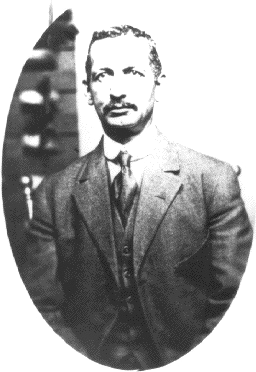
THE REID-GALT-TURNER-PARKER PAGES
A BRIEF HISTORY OF THE GALT, TURNER, AND PATTERSON FAMILIES
Excerpted From "The Man Who Cried Genocide"
By William L. Patterson
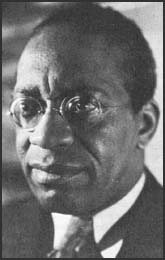
William L. Patterson
[Note: William L. Patterson was the grandson of William Henry Galt and Elizabeth Mary Turner Galt, who came out of slavery and migrated from the tidewater area of coastal Virginia to California sometime immediately prior the outbreak of the Civil War. William and Elizabeth Galt 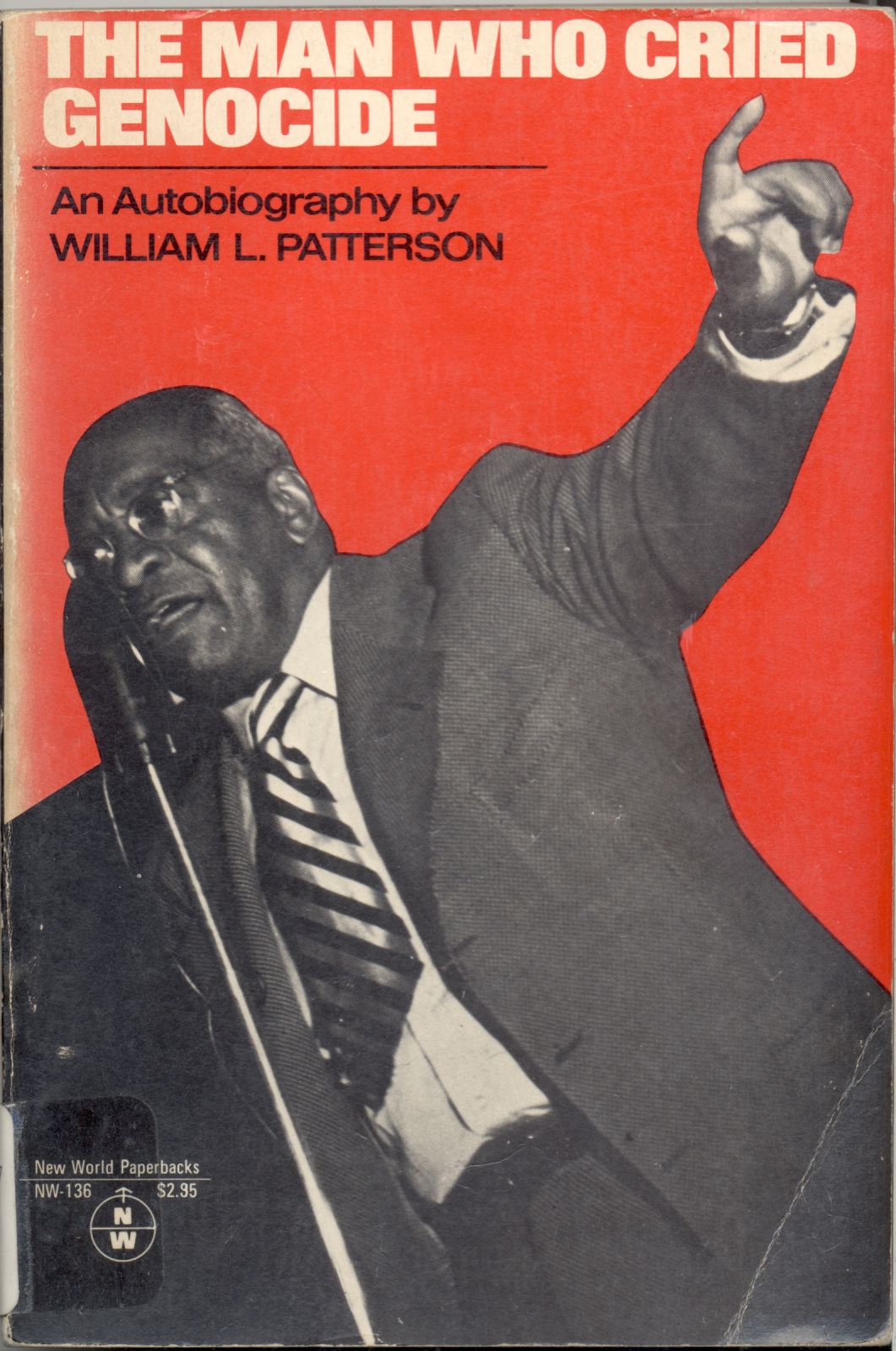 brought their three children with them to California, two daughters, Mary and Annie, and one son, Richard. Richard died in Sacramento, California. Mary's son, William Patterson, and Annie's daughter, Jenny, were first cousins. Jenny later married Thomas Reid, Sr., and from that union came the extensive Reid family of Berkeley and Richmond, California.
brought their three children with them to California, two daughters, Mary and Annie, and one son, Richard. Richard died in Sacramento, California. Mary's son, William Patterson, and Annie's daughter, Jenny, were first cousins. Jenny later married Thomas Reid, Sr., and from that union came the extensive Reid family of Berkeley and Richmond, California.
[William Patterson became a prominent lawyer, a writer, and radical organizer and political leader and in the 1930's and 1940's, he was one of the top African-American officials in the Communist Party of the United States. Among other accomplishments, William Patterson helped organize the defense of the Scottsboro Boys, young black men falsely accused of raping a white woman in segregated Alabama, and was the author of the famous "We Cry Genocide" petition that Paul Robeson presented to the United Nations in protest of the American treatment of African-Americans.
[The excerpt below of the family history coming out of slavery in Virginia and the trek across country to California apparently relied heavily upon the account of William Patterson's mother, Mary Galt Patterson.]
My mother often talked to us about her childhood on the Virginia plantation where she was born as a slave in 1850 and had lived until she was ten. It was in cotton lands not far from Norfolk—she knew that because her grandfather, who often drove to the "big city," was seldom gone for long. Her father, William Galt, was a slave who belonged to the owner of an adjacent plantation, and as a child she saw very little of him. As coachman for the master--who was also his father—he drove back and forth on visits to the Turner plantation, where he met and later married my grandmother, Elizabeth Mary Turner.
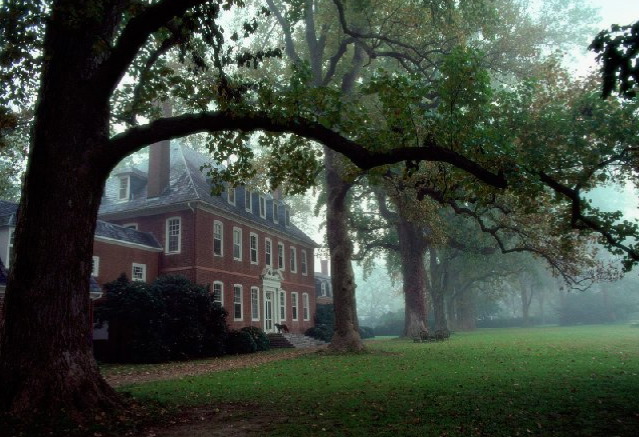
Typical Virginia Plantation Big House
The big house was set back from the magnolia-lined plantation road leading to the main highway to Norfolk. But my mother lived in the slave quarters, which were quite some distance back from the manor house. Here, separated from her mother and grandmother, she lived with older slave women who were part of the crew that served the master's immediate household.
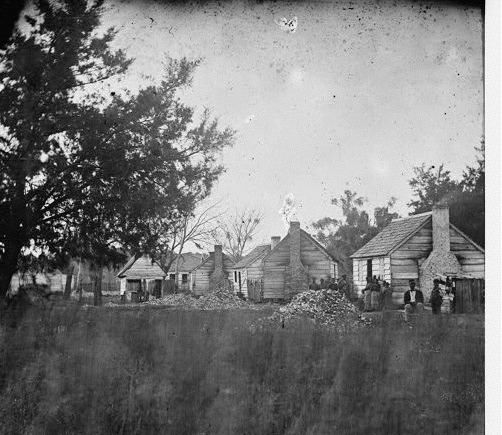
Typical Slave Quarters
My grandmother was personal maid to the white wife of her father and master; my great-grandmother was head of the house slaves and also her owner's slave woman (at that time the word "mistress" was not used in that sense). My mother had learned of her grandmother's role from gossip among the field hands, but it was beyond her to question the morality of this situation. Morality played no part in the relationships between white slaveowners and their slave-women--the masters' morals were class morals in judging the slave system or their own personal relations with slaves.
According to the gossip, my great-grandmother first came to the notice of the big house through her ability as a cook. In line with the general mistreatment of field hands--rags for clothing, shacks for living quarters, cheap and primitive medication--they were never well fed. When my mother's grandmother was living among the field slaves, she got the slaves who slaughtered and cut up the hogs and cattle to bring her the entrails, hooves, heads and other "throwaway" parts, along with similar leftovers from chicken killings. Somehow she had acquired great skill in the use of herbs for cooking as well as for healing. She converted the leftovers into such tasty dishes that she soon gained a reputation as the best cook on the plantation. Before long she was ordered into the big house to cook for the master's family. She was an attractive woman and, as the story goes, the master found more than her cooking to his taste. Eventually she gave birth to three of his children.

Typical Slaverytime Plantation Cook And Kitchen
Field hands, according to my mother, said that Cap'n Turner's wife knew of the relationship—it would be something in the nature of a miracle had she not known. But there was little or nothing she could do about it and, after all, the slave mother and her children were no economic threat to her.
Despite his slaveowner's morality, great-grandfather Turner revealed a sense of responsibility toward his families—both Black and white. He recognized the danger of war to his children, as did his friend Galt, and he believed in the right of a master to free his slaves. Before the war broke out, he managed to move his families away from the land that was destined to be drenched in blood. He sent his white family north to Bridgeport, Connecticut, the Black family west to California. My grandfather Galt sent his son along with them.
My great-grandmother, then an old woman, stayed behind with the father of her children—they must have been deeply attached to one another. My grandmother was given the responsibility of settling her white relatives in New England. The trust reposed in her was not an uncommon thing. Her master obviously had great faith in his dark-skinned daughter's ability to take care of duties like these.
Those who were sent on the Westward trek went by way of Panama and from there across the Isthmus. The trip down the Atlantic Coast may have been more or less routine but crossing the Isthmus along a narrow, single-track line must have been more difficult. At Colon on the Pacific side, the freed men and women took a ship to San Francisco—a long and hazardous trip.
It is likely that the Black Galts and Turners were sent to California by way of Panama to avoid the overland trek through Indian territory as well as to escape the fugitive slave hunters who plied their lucrative trade beyond the Eastern seaboard.
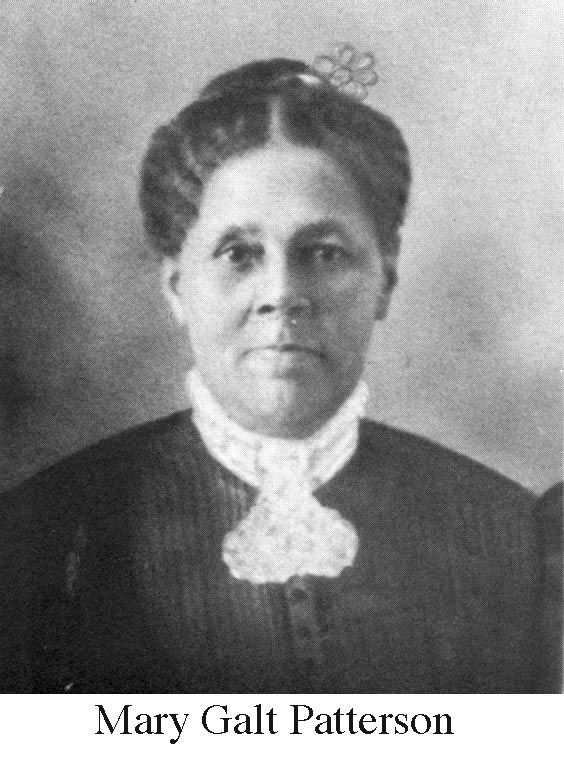 My mother, Mary Galt, was about five-feet-three in height. Her complexion was brownish yellow; her hair wavy, with streaks of gray as she grew older. Strong and energetic, she was a fighter when she knew what the fight was about. She was ten when her grandfather sent his liberated Black children west.
My mother, Mary Galt, was about five-feet-three in height. Her complexion was brownish yellow; her hair wavy, with streaks of gray as she grew older. Strong and energetic, she was a fighter when she knew what the fight was about. She was ten when her grandfather sent his liberated Black children west.
Originally there were four children in our immediate family. My sister Alberta was the child of my mother's marriage to Charles Postles, who came west from North Carolina. He died shortly after Alberta was born, and my mother subsequently married James Edward Patterson.
A few years after he arrived in California, grandfather Galt organized a regiment of Negro volunteers known as the California Zouaves. Undoubtedly my grandfather feared the efforts of confederate sympathizers to take California, a free state, out of the Union and was determined to do anything to help prevent such a monstrous catastrophe. Governor Frederick P. Low of California honored him for his work in his regiment at a banquet in Sacramento, the capital, presenting him with a huge pewter platter and pitcher on which were inscribed the names of the governor and my grandfather. The set fell to our branch of the family and remained a cherished heirloom until we were forced to pawn it.
William Galt took part in other great liberation battles, prepared anti-racist conferences and conventions, helped fight civil rights cases through the state and federal courts in valiant efforts to make the Emancipation Proclamation and post-Civil War constitutional amendments instruments for freedom.
Below: Newspaper advertisement for the Ninth Anniversary Of Freedom Proclamation Grand Emancipation Celebration sponsored by the Sacramento Zouaves, January 1, 1872. William Henry Galt is noted as Lieut. Galt under the COMMITTEE OF ARRANGEMENTS near the bottom of the notice. From the December 29, 1871 Edition of The Elevator newspaper, A Weekly Journal of Progress, the colored newspaper of San Francisco, California.
